Shade Opens New Doors
When your landscape is basically all shaded, your whole game plan changes. Dreams of the perfect turf, croquet and running around barefoot pretty much go by the boards. No self-respecting lawn grass will put up with full shade. Neither will most flowering shrubs.
That’s about when many gardeners throw their arms up in despair and exclaim, “Oh, what can I do? I thought I wanted shade, and now I can’t get anything to grow.” It seems like they’ve run out of options.
The good news is that you have lots of great choices. In fact, shade becomes a grand opportunity. You just have to reset your sails, and like Columbus, set off for a New World.
That’s when I try to reach out with a psychologoical hug from afar to reassure that there is hope. There are solutions.
Before…

Photo: You saw this photo last week when I described the turfgrass thinning due to excessive shade. It was getting worse several years ago, and I knew something had to be done.
After…
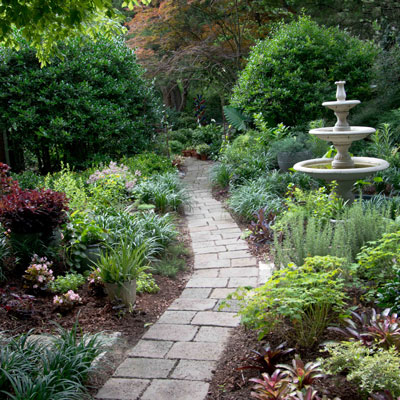
Photo: With the turfgrass gone I was freed to plant groundcovers (liriope, mondograss, purple wintercreeper and Asian jasmine) and shrubs (hollies, boxwood and others) that could cope with the shade.
Shrubs for the Shade…
Some shrubs must have full, or nearly full sunlight. As with lawngrasses, that translates into a requirement of 6 or 8 hours of direct sunlight daily. The list of sun-loving shrubs includes many of our most common evergreen types and most of our flowering shrubs.
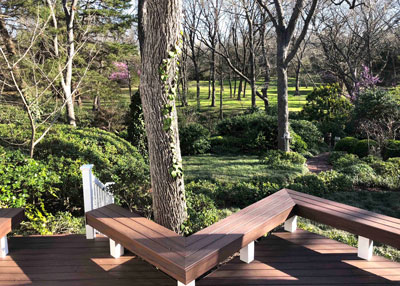
There are other shrubs that do famously in areas that have little or no direct sunlight. They’re the ones we need to consider when shade starts to dominate our landscaping lives. (I took this photo across our new deck by Future Outdoors of Midlothian just a few days ago.) Click photo for larger view.
Among the best are the many types of hollies. There is so much variation in the growth forms and looks of the hollies, that many (of us) have done entire landscapes using hollies almost exclusively.
The Sperry shade landscape includes (in order of increasing height at maturity) dwarf yaupon, dwarf Chinese, Carissa, dwarf Burford, Needlepoint (Willowleaf), Burford, Robin, Mary Nell, Oakland and Oakleaf, Weeping yaupon, Nellie R. Stevens, yaupon and Warren’s Red possumhaw hollies.
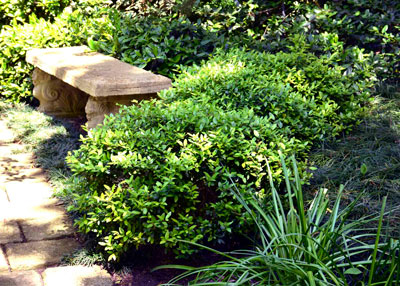
Dwarf yaupon holly
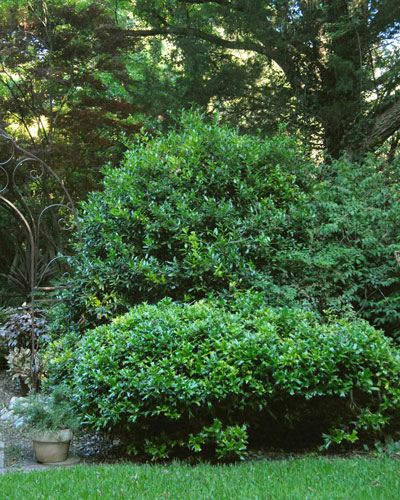
Willowleaf (Needlepoint) holly with dwarf Chinese holly in foreground.
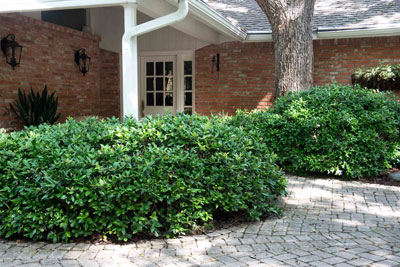
Carissa holly (l) and dwarf Chinese holly (r).

Mary Nell holly
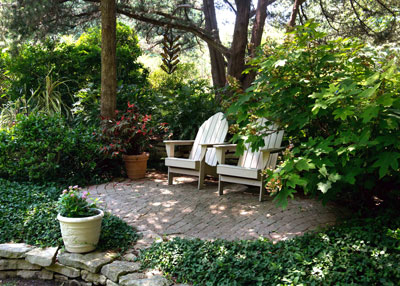
Patio in the Sperry landscape is surrounded by Oakleaf hydrangeas, hollies. Click image for larger view.
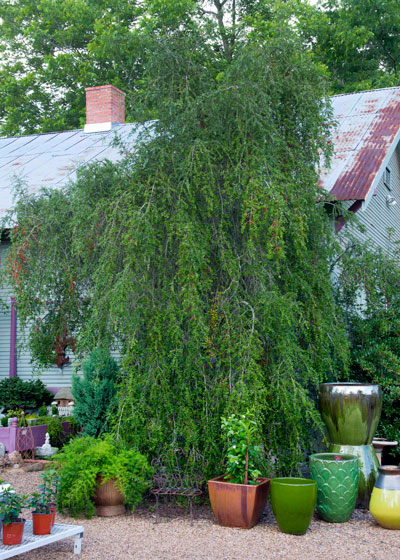
Weeping yaupon holly (Blue Moon Gardens, east of Edom in Chandler TX)

Our Nellie R. Stevens holly trained tree form.
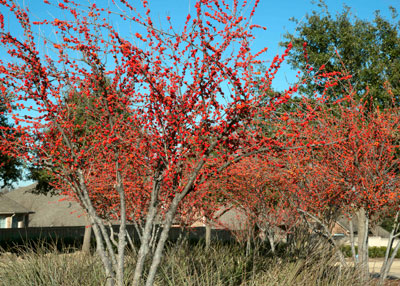
Warrens Red possumhaw holly
I actually have a few others like First Lady yaupon (a fruiting semi-dwarf form of yaupon), Dazzler and Berries Jubilee – and probably others – that are now virtually extinct in the nursery trade.
Other varieties of hollies such as Foster’s, Savannah and East Palatka, although commonly sold over much of the state, are not well suited to alkaline soils and require more careful planting unless you’re in East Texas.
Life in the shade beyond hollies…
Let’s assume, however, that you want something more than just hollies in your surroundings. Here are some other shrubs to consider.
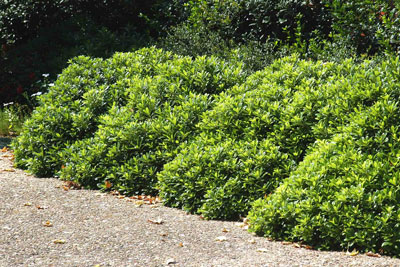
Wheeler’s Dwarf pittosporum
Pittosporums do well in part shade but can be hurt by extreme cold in the northern half of the state, particularly near and north of the I-20 corridor.
The several types of nandinas grow well in the shade, and if trees go bare in the winter to let the sun reach the nandinas’ foliage, you’re likely to see rich reds and maroons in their leaves. Nandinas bring a delightfully airy texture to their surroundings, a nice complement to the much bolder hollies.
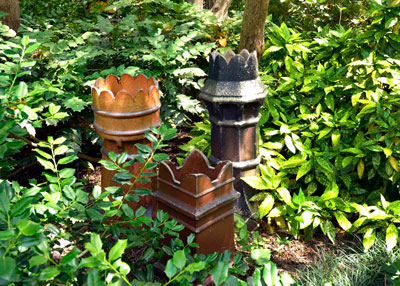
Leatherleaf Mahonias (in background) and Gold Dust Aucubas (r)
Leatherleaf mahonias are related to nandinas, and they share the same dramatically upright growth habit. However, leatherleafs are extremely prickly. They’re also blue-green and dramatic. They produce bright yellow flowers in late winter which are quickly followed by grape-like clusters of sky blue fruit, favorites of birds. This plant grows to 4 to 5 feet tall and 4 feet wide, and it’s fabulous in shade or early morning sun.
Aucubas must have full shade. There are speckled and banded brightly variegated types, but Gold Dust seems to be the most dependable overall. It is a great source of color in a dark, shaded corner.
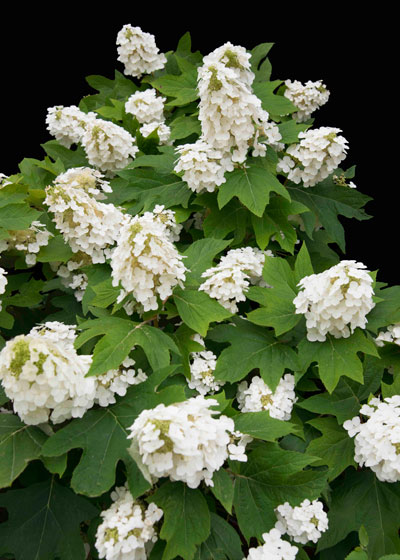
Oakleaf hydrangea
Oakleaf hydrangeas are large and bold shrubs that are noted for their giant white floral heads in late spring and their rich red fall color each November. They do well in any moist, shady location. They’re easier to grow in challenging sites than their sister mophead hydrangeas, the pink or blue florist-style selections that are commonly found in East Texas.
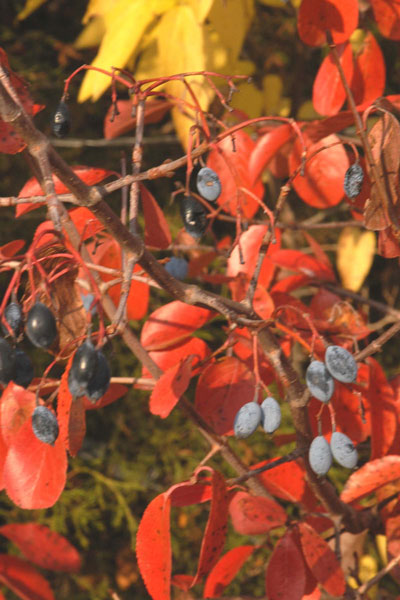
Rusty blackhaw viburnum
Rusty blackhaw viburnum, sweet viburnum (another winter-vulnerable plant) and eastern snowball viburnums add to the list of shrubs that perform best in the shade. Viburnums are under-planted in Texas, and these three deserve your consideration.

Bloodgood Japanese maple in Sperry backyard in autumn.
Japanese maples are actually trees, of course, but some of the varieties double as shrubby plants in our landscapes. They must have shade in most of Texas, and they’re best suited to East and Northeast Texas. Both green- and purple-leafed types are available, but the critical thing to check before you buy one is its mature size. The different varieties will range from 5 or 6 feet to 20 feet tall and taller at maturity. Buy and plant accordingly.

